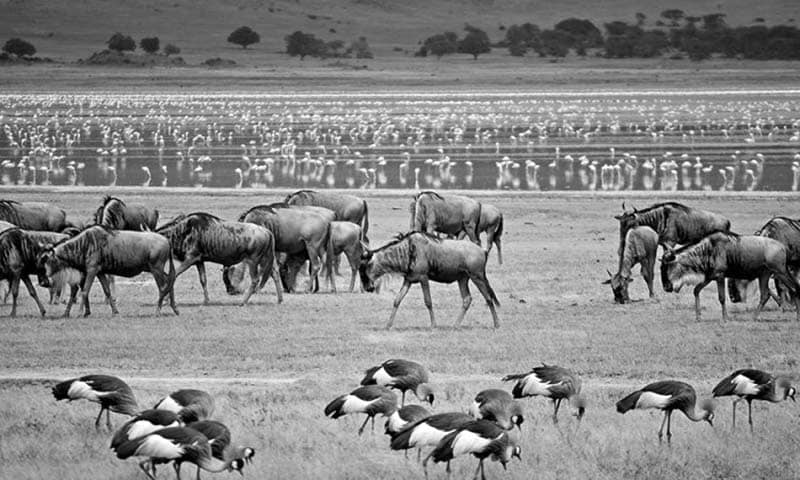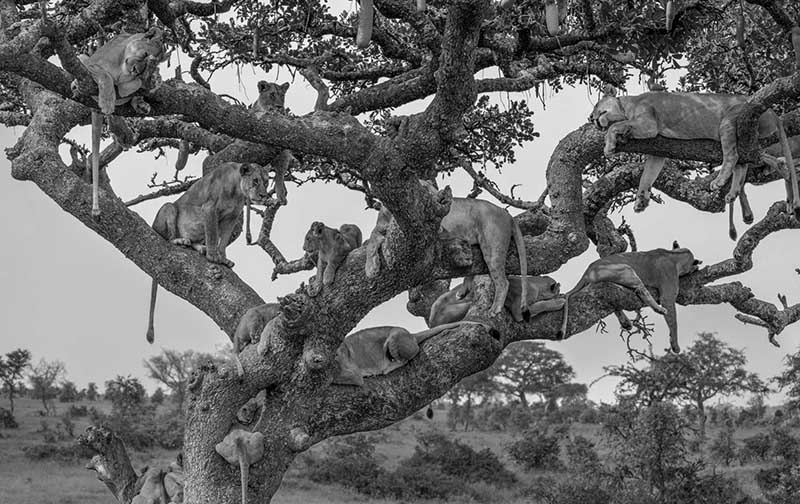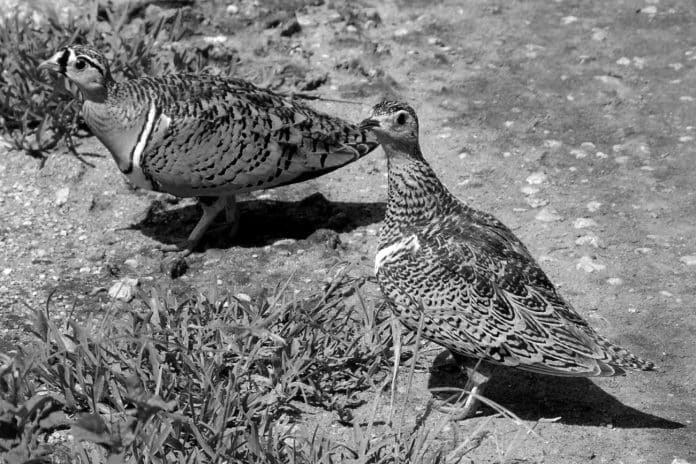Black-faced Sandgrouse in Tanzania: Camouflaged Beauties of the Arid Plains
Introduction to the black-faced sandgrouse in Tanzania
In the arid plains of Tanzania, a mesmerizing avian presence graces the landscape—the black-faced sandgrouse (Pterocles decoratus). Adapted with remarkable features and natural camouflage, these birds have flourished in this demanding environment. Within this article, we embark on a journey to uncover the habitat, unique physical attributes, behavior, and intricate breeding patterns of the black-faced sandgrouse in Tanzania. Furthermore, we explore the challenges they encounter and the dedicated conservation endeavors aimed at safeguarding these exquisite creatures.
Habitat and distribution of the black-faced sandgrouse in Tanzania
The black-faced sandgrouse is primarily found in the arid regions of Tanzania, particularly in the central and northern parts of the country. They inhabit the vast plains, dry grasslands, and scrublands. These birds have adapted to survive in these dry environments with limited water sources. They are known to travel long distances in search of water, often flying up to 50 kilometers to reach watering holes.
Physical characteristics and adaptations of the black-faced sandgrouse
The black-faced sandgrouse is a medium-sized bird, measuring around 30 centimeters in length. They have a plump body and short legs, which are adapted for walking and running on the arid terrain. The males have striking black faces with a white stripe that extends from the eye to the neck, while the females have a more subdued plumage. Their feathers are intricately patterned in shades of brown and gray, providing excellent camouflage against the sandy backdrop.
To survive in the arid plains, the black-faced sandgrouse has developed several adaptations. One remarkable adaptation is their ability to drink water by soaking their belly feathers and then transporting it back to their chicks. The feathers become sponge-like and can hold up to 20 milliliters of water. This unique behavior allows them to bring water to their young ones, even in the absence of nearby water sources.
Behavior and breeding patterns of the black-faced sandgrouse
Black-faced sandgrouse are typically seen in small groups, known as coveys, consisting of a breeding pair and their offspring. They are diurnal birds, being most active during the early morning and late afternoon. During the hottest parts of the day, they seek shelter under the shade of trees or bushes.
Breeding season for the black-faced sandgrouse usually occurs during the rainy season when there is an abundance of food and water. The male performs an elaborate courtship display, which involves puffing up his chest, raising his wings, and making a series of cooing sounds to attract a mate. Once the female is impressed, they build a shallow nest on the ground and lay two to three eggs. Both parents take turns incubating the eggs and caring for the chicks once they hatch.
Threats and conservation efforts for the black-faced sandgrouse in Tanzania

The black-faced sandgrouse faces several threats in Tanzania. One major threat is habitat loss due to human activities such as agriculture and urbanization. The conversion of arid plains into farmland disrupts their natural habitat and reduces their food sources. Additionally, hunting and trapping for the illegal pet trade pose a significant threat to their population.
To protect the black-faced sandgrouse, various conservation efforts are in place. Several national parks and reserves in Tanzania, such as the Serengeti National Park and the Ngorongoro Conservation Area, provide protected areas for these birds to thrive. These protected areas also help in maintaining the balance of the entire ecosystem. Furthermore, awareness campaigns and community education programs are conducted to raise awareness about the importance of conserving these beautiful birds.
The role of black-faced sandgrouse in the ecosystem
The black-faced sandgrouse plays a vital role in the ecosystem of the arid plains of Tanzania. As seed-eating birds, they assist in seed dispersal, which helps in the regeneration of plant species. Their feeding habits also contribute to maintaining a healthy plant community by controlling insect populations. Additionally, they serve as prey for larger predators, thus contributing to the overall food web in the region.
Best places to spot the black-faced sandgrouse in Tanzania

If you are eager to spot the black-faced sandgrouse in Tanzania, there are a few recommended locations. The Serengeti National Park and the Ngorongoro Conservation Area are excellent places to start your search. These protected areas provide suitable habitats for the sandgrouse and offer opportunities to observe them in their natural surroundings. Remember to be patient and keep your eyes peeled for their well-camouflaged presence.
Tips for observing and photographing black-faced sandgrouse
Observing and photographing the black-faced sandgrouse can be a rewarding experience. Here are a few tips to enhance your chances of success:
- Patience is key: Black-faced sandgrouse can be elusive, so be prepared to spend time waiting for them to appear.
- Blend in: Wear neutral-colored clothing that matches the arid landscape to avoid startling the birds.
- Use a telephoto lens: Black-faced sandgrouse are often found in open areas, so a telephoto lens will help you capture close-up shots without disturbing their natural behavior.
- Respect their space: Maintain a safe distance from the birds to avoid causing stress or disturbance.
Interesting facts about the black-faced sandgrouse
- The black-faced sandgrouse is known for its extraordinary ability to fly long distances in search of water. They have been recorded traveling up to 400 kilometers in a single day.
- These birds have a unique digestive system that allows them to extract water from dry seeds, enabling them to survive in arid environments.
- Black-faced sandgrouse are monogamous birds, forming lifelong pair bonds with their mates.
- The male sandgrouse performs a “sandbathing” behavior, where he rolls around in dry sand to keep his plumage clean and remove parasites.
Appreciating the beauty and importance of the black-faced sandgrouse in Tanzania
The black-faced sandgrouse is a magnificent bird species that has adapted to thrive in the arid plains of Tanzania. Their unique physical characteristics, behaviors, and adaptations make them a fascinating subject of study. By understanding the threats they face and supporting conservation efforts, we can ensure the survival of these camouflaged beauties for future generations to appreciate. So, next time you find yourself in the arid landscapes of Tanzania, keep an eye out for the black-faced sandgrouse and marvel at their remarkable existence.
For more articles related to Wildlife in Tanzania (Animals), click here!

































